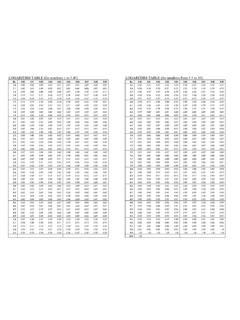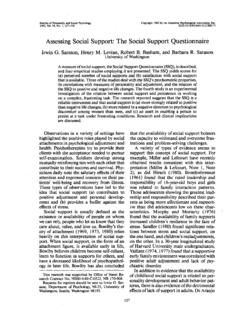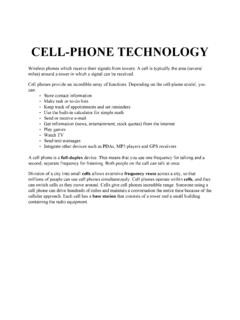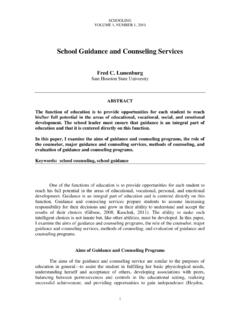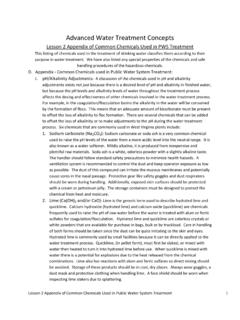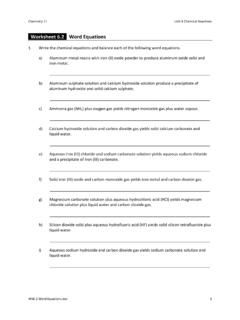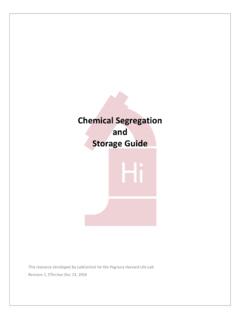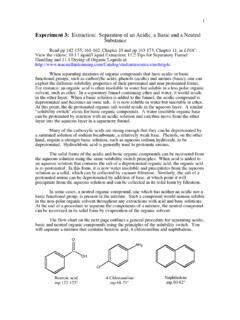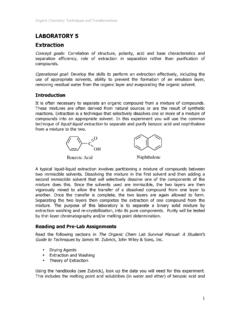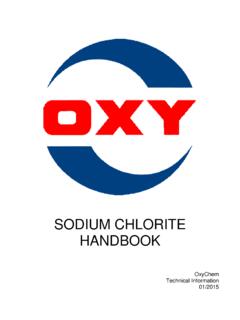Transcription of Introduction to electrolysis - electrolytes and non ...
1 1 Introduction to electrolysis - electrolytes and non- electrolytes electrolysis is the process of electrically inducing chemical changes in a conducting melt or solution splitting an ionic compound into the metal and non-metal. SUMMARY OF COMMON ELECTRICAL CONDUCTORS These materials carry an electric current via freely moving electrically charged particles, when a potential difference (voltage!) is applied across them, and they include: All metals (molten or solid) and the non-metal carbon (graphite). This conduction involves the movement of free or delocalised electrons (e- charged particles) and does not involve any chemical change. Any molten or dissolved material in which the liquid contains free moving ions is called the electrolyte and can conduct an electrical current.
2 Ions are charged particles Na+ sodium ion, or Cl- chloride ion, and their movement or flow constitutes an electric current, in other words the electrolyte consists of a stream of moving charged particles. What does the complete electrical circuit for electrolysis consist of? There are two ion currents in the electrolyte flowing in opposite directions positive cations sodium Na+ are attracted to the negative cathode electrode, and negative anions chloride Cl- are attracted to the positive anode electrode. Remember no electrons flow in the solution, but they do flow in metal wires or carbon (graphite) electrodes of the external circuit. sub-note: (i) The greater the concentration of the electrolyte ions, the lower the electrical resistance of the solution.
3 This is because there are more ions present to carry the current if the voltage (V, volts) is kept constant, the current flowing (I, amps) will steadily increase as the concentration of the electrolyte is increased. The molten or dissolved materials are usually acids, alkalis or salts and their electrical conduction is usually accompanied by chemical changes decomposition. The chemical changes occur at the electrodes which connect the electrolyte liquid containing ions with the external electrical supply. Liquids that conduct must contain freely moving ions to carry the current and complete the circuit. In solid ionic compounds the ions are too tightly held by chemical bonds and can't flow from their ordered situation!
4 When an ionically bonded substances are melted or dissolved in water the ions are free to move about. However some covalent substances dissolve in water and form ions. hydrogen chloride HCl, dissolves in water to form 'ionic' hydrochloric acid H+Cl-(aq) 2 The solution or melt of ions is called the electrolyte which forms part of the circuit. The circuit is completed by the external copper wiring and the (usually) inert electrodes like graphite (form of carbon) or platinum AND electrolysis can only happen when the current is switched on and the circuit complete. Conductor versus electrolyte An electrolyte is a solution that can conduct electricity due to ions present in it. What is the difference between a conductor and an electrolyte?
5 The figure below shows two circuits : one for a conductor and one for an electrolyte. The differences between the two are as follows: a) In a conductor, electrical current is flowing through the material in its solid form. Conductors are generally metals. On the other hand, an electrolyte can carry current in its molten state or in a solution form. electrolytes are generally made from ionic compounds and not covalent compounds (HCl and NH3 are a few of the exceptions). When a current passes through a conductor, it may get heated up because of its inherent resistance. Other than this physical change, there is no other change in the conductor. Once, the current stops flowing, the conductor returns to its original state. On the other hand, in an electrolyte, the cations and anions go in opposite directions and get neutralized at the positive and negative electrodes respectively.
6 The chemical change thus produced is irreversible. b) The current through a conductor is due to free electrons that flow and complete the circuit. The current through an electrolytic cell is because of the flow of ions. c) For a given conductor and a cell, the current flowing through the circuit is constant. In an electrolytic cell, the current depends on the strength of the electrolyte, which may change over time. Some definitions regarding electrolysis 3 : It is a chemical process where a substance in its molten state or in an aqueous solution is decomposed by the passage of electric current. : A compound that allows electric current to pass through itself, when either in a molten state or in an aqueous solution, is called an electrolyte. Solutions of sodium chloride, copper sulphate, dilute sulphuric acid are examples of strong electrolytes .
7 Weak electrolytes are those compounds which are poor conductors of electricity when they are in a molten state or in an aqueous solution. 3. Non-electrolyte : A compound which does not allow electric current to pass through itself in any state, molten or aqueous, is called a non-electrolyte. : The strips of metals inserted in the electrolytes for conduction of electricity are called electrodes. The metal electrode connected to the positive terminal of the battery is called the anode (+). The metal electrode connected to the negative terminal of the battery is called the cathode (-). cell : The complete set-up for electrolysis is called the electrolytic cell. This consists of the vessel containing the electrolyte, anode, cathode, battery and wires.
8 Electrolytic cell is also known as a voltameter, since it generates voltage (or current) at its two terminals. To summarize the process of electrolysis , we can say the following electrolytes dissociate to form negatively charged anions and positively charged cations. The ions conduct electricity through the electrolyte. Cations are attracted towards the negative electrode. They take the excess electrons from the electrode and neutralize themselves. Anions are attracted towards the positive electrode. They give up the excess electrons from the electrode and neutralize themselves. The electrolyte dissociates and the constituent elements of the salt are liberated at the electrodes. electrolysis of Molten Lead(II) bromide with carbon electrodes Carbon (graphite) electrodes dipped into molten salt which has been strongly heated in a crucible.
9 It is difficult to collect the gases at the electrodes! The salts may be very high melting, so sometimes a small amount of another salt impurity is added to lower the melting point. 4 Reaction at anode: (Oxidation of Bromide ions to bromine gas) 2Br- Br2 + 2e- Reaction at cathode: (Reduction of lead(II) ions to lead atoms) Pb2+ +2e- Pb electrolysis of water ( electrolysis of dilute sulphuric acid) The apparatus or the electrolytic cell, required for performing electrolysis of water is shown in the figure below. The cell is called Hoffman s voltameter. Since water is a covalent compound, pure or distilled water is a very weak electrolyte. A few drops of ionic compound like dilute sulphuric acid are enough to make the water become an electrolyte.
10 The anode collects oxygen and the cathode arm collects hydrogen gas. The overall reaction that takes place is: H2SO4 2H+ + SO42- 5 Water also is capable of dissociation. H2O H+ + OH- Reaction at the cathode 2H+ + 2 e- H2 Reaction at the anode 4OH - H2O + O2 + 4e- At the anode OH- ions are released in preference to SO42- ions. This is because it is easier for an OH- ion to give up an electron quickly than for the SO42- ion to do so. Example: electrolysis of sodium chloride solution The ions present in the solution are: sodium ions chloride ions hydrogen ions hydroxide ions Na+ Cl- H+ OH- At the cathode The positive ions are attracted to the negative cathode. There is competition between the sodium ions and the hydrogen ions.

